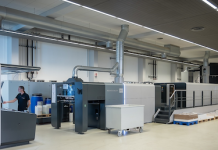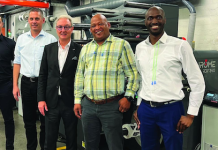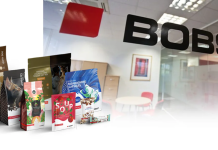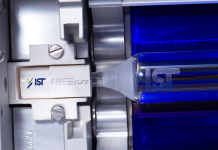Tilia Labs will unveil the power of its forthcoming Phoenix 7.0 software release for narrow web production. The company will showcase brand new features for optimising substrate usage and boosting setup speed, flexibility and control for narrow-web label printers.
The unveiling will take place at Labelexpo Americas 2018 in Chicago during September. Tilia Phoenix uses Artificial Intelligence (AI) in automating planning and imposition for all types of print and post-press applications. The system factors in parameters, such as job specifications (quantity, dimensions, colours, substrates), presses/print devices, postpress requirements and delivery considerations, to deliver optimal layout options. When a final option has been selected, tilia Phoenix generates print-ready layouts and JDF or die instructions, for all devices in the production chain.
Features include:
– Optimised lane-based planning – automatically and dynamically computing millions of layout options, Phoenix 7.0 delivers combinations for reducing substrate consumption in minutes, including combining items of differing sizes and shapes in the same lane.
– Custom grouping rules – Phoenix 7.0 adds custom properties and grouping rules to give users greater flexibility to set combination preferences for lanes and standing dies.
– Enhanced die intelligence – fully dynamic planning will automatically generate new layouts for die creation or digital laser cutting
– Lead-in and lead-outs – specify required lead-in and lead-out for each label to be planned and apply dynamic marks such as barcodes, and eye marks.
‘Phoenix has already proved to be a very powerful tool for producers of packaging and labelling in allowing them to dramatically reduce production planning and makeready time while also minimising substrate usage,’ said Sagen de Jonge, CEO of Tilia Labs.
‘For 7.0 we’ve worked closely with customers and technology partners to identify and refine the requirements that can deliver the next significant step up for narrow-web printing. Label printers’ requirements are quite unique, operating with many product versions and short runs. The speed of Phoenix was never in question, but we’ve focused on adding more versatility for label printers to create their own customised processes, both for regular types of production runs and those combining unique shapes and applications.’
The new tilia Phoenix version 7.0 will also incorporate significant performance enhancements to the Imposition AI engine, which forms the power core of the Phoenix solution. Data processing capable of keeping up with the fastest presses on the market complements recent improvements to template-based planning and optimisations for sheets and rolls. These enhancements push the speed boundary yet further for Phoenix in searching across millions of combinations to find the most cost-effective layouts within a matter of minutes. Major estimating and reporting enhancements also allow for better analysis, accountability and planning, including press-time granularity down to the nearest second.





















